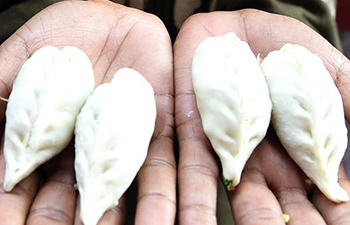BEIJING, Feb. 3 (Xinhua) -- Chinese astronomers have discovered more than 10,000 metal-poor star candidates, which may help shed light on the early universe and the emergence of the first stars and galaxies.
Astronomers use the word "metals" to describe elements heavier than hydrogen and helium. This usage is distinct from the usual physical definition of a solid metal, said Li Haining, an astronomer with the National Astronomical Observatories of China (NAOC) under the Chinese Academy of Sciences.
Astronomers believe that the majority of elements heavier than hydrogen and helium in the universe are formed in the cores of stars as they evolve. Over time, stellar winds and supernova deposit the metals into the surrounding environment, enriching the interstellar medium and providing recycling materials for the birth of new stars.
Therefore, the lower the metal contents in stars, the older the stars in the universe.
The research on metal-poor stars will help us understand the early universe, the origin of elements, as well as the emergence and evolution of the first generation stars and galaxies, Li said.
However, metal-poor stars are very rare and difficult to observe, she said.
Based on data from the Large Sky Area Multi-Object Fiber Spectroscopic Telescope (LAMOST), located in NAOC's Xinglong Observatory in north China's Hebei Province, astronomers have found more than 10,000 metal-poor star candidates with metal contents less than 1 percent of those in the sun.
LAMOST can observe about 4,000 celestial bodies at one time, and helped Chinese astronomers establish the world's largest databank of stellar spectra.
"This greatly improved the possibility of discovering rare celestial bodies like metal-poor stars," Li added.
The discovery was recently published in the Astrophysical Journal Supplement Series.

















